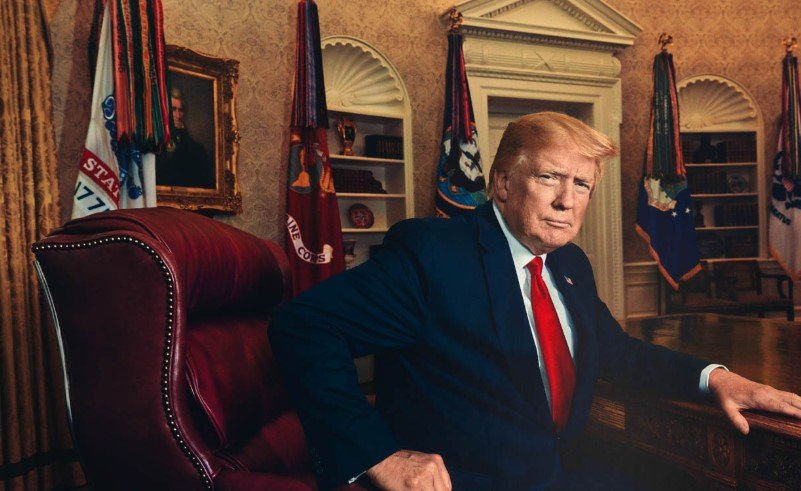Riyadh tops Russian oil buyers list, stoking geopolitical tension and raising alarm bells in Washington
Saudi Arabia has surged past other buyers to become the leading importer of Russian fuel oil and vacuum gasoil, according to newly released trade data—triggering a sharp rebuke from former U.S. President Donald Trump, who warned of possible tariffs if the trend continues.
The revelation comes as Russia, under heavy Western sanctions since the 2022 Ukraine invasion, has pivoted most of its oil exports toward Asia and the Middle East. For Riyadh, the move appears economically sound. But politically? It’s risky business.
Trump, in characteristic fashion, didn’t mince words. “If Saudi Arabia wants to side with Putin and buy their oil, they can pay the price,” he said at a campaign event in Michigan on Sunday. “Tariffs are on the table. Big ones.”
Oil, Strategy, and a Summer Demand Spike
The data, released by the London Stock Exchange Group (LSEG), shows that Saudi Arabia imported around 800,000 tons of Russian seaborne fuel oil and vacuum gasoil (VGO) in June alone—a 9% month-over-month rise.
That’s not a small bump. It’s a massive red flag in Washington.
With scorching summer temperatures driving up domestic energy use, Saudi power plants need more feedstock to keep air conditioners humming. But the kingdom also wants to keep its own crude flowing to export markets, where margins are higher.

So what’s the workaround? Import Russian refined products, burn them locally, and sell the Saudi crude to buyers in Asia and Europe at a premium.
Simple economics. But geopolitically messy.
A Shifting Map of Russian Oil Destinations
Since Europe’s embargo on Russian oil took full effect in 2023, the Kremlin has reoriented its exports almost entirely toward Asia, the Middle East, and Africa.
Here’s how things look based on June shipment data:
| Country | Change in Russian Oil Imports (June YoY) |
|---|---|
| Saudi Arabia | +9% |
| India | -49% |
| Turkey | -33% |
| Singapore | Flat |
| Senegal | +12% |
| China | +4% |
| Egypt | +6% |
India and Turkey—both considered U.S. allies—have sharply reduced their Russian oil imports. Meanwhile, Riyadh seems to be going the other way.
One energy analyst in London told us, “Saudi Arabia’s strategy is entirely logical from a profit standpoint. But in Washington, it’s going to be read as ‘playing both sides.’”
Trump’s Threat: Tariffs and a Recalibrated Alliance?
Trump’s threat to impose tariffs on Saudi oil imports marks a dramatic turn in the usually tight-knit U.S.–Saudi energy relationship. For decades, the two countries have been deeply intertwined—Saudi Arabia ensuring global oil supply stability, the U.S. providing military and strategic backing.
But that handshake has been looking shaky lately.
Saudi Arabia has deepened ties with China. It rejoined the BRICS bloc. And it’s hosted high-level meetings with Russian officials in recent months. To Trump and his base, that’s a provocation.
“Why are we defending them when they’re buying Putin’s oil?” Trump asked rhetorically on the campaign trail.
A source close to his campaign said internal discussions are already underway to potentially label Saudi oil imports as “unfair trade practices” under a revised Trump-era energy policy.
It’s unclear how such a move would fare under WTO scrutiny or whether President Biden would back similar action. But the political messaging is unmistakable.
Riyadh Walks a Diplomatic Tightrope
Saudi officials, for now, are keeping quiet. But behind closed doors, there’s concern that the headlines could trigger more than just angry tweets.
One Gulf diplomat said, “The Saudis don’t want to get caught in the middle. But they also won’t give up profitable trade routes just to appease Washington.”
For Riyadh, Russian fuel oil serves a specific purpose: it helps free up domestic crude for exports, easing pressure on internal refineries and maximizing external revenue.
That logic is unlikely to change unless U.S. pressure becomes too costly to ignore.
Yet this isn’t just about oil. The friction reveals how energy politics are evolving post-Ukraine. Countries that once toed the U.S. line on sanctions are now hedging—playing the field for the best deals, even if it means upsetting old allies.
What Could Happen Next?
There are several scenarios in play. Here are a few being discussed in policy circles:
• Tariffs or restrictions on Saudi petroleum imports into the U.S., though this would require major legislative or executive moves
• Diplomatic retaliation, such as pulling back defense cooperation or slowing weapons sales
• Backchannel negotiations where the Saudis quietly reduce Russian imports in exchange for U.S. concessions elsewhere
• Escalation into an OPEC+ standoff, if Trump targets oil diplomacy as a campaign pillar
Trump, now campaigning aggressively for a second term, is likely to lean into the message that “America is being taken advantage of”—especially by countries perceived as allies but acting independently.
Analysts say this line of attack resonates with his base, particularly in energy-producing states like Texas, Oklahoma, and North Dakota.
One Washington lobbyist put it bluntly: “Saudi Arabia may need to pick a side sooner than it wants to.”
